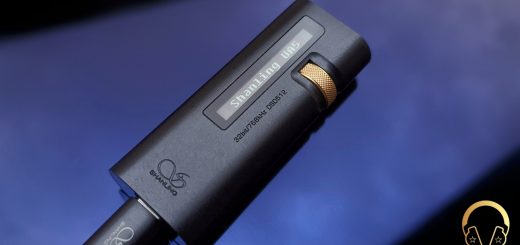Radsone EarStudio ES100 Review
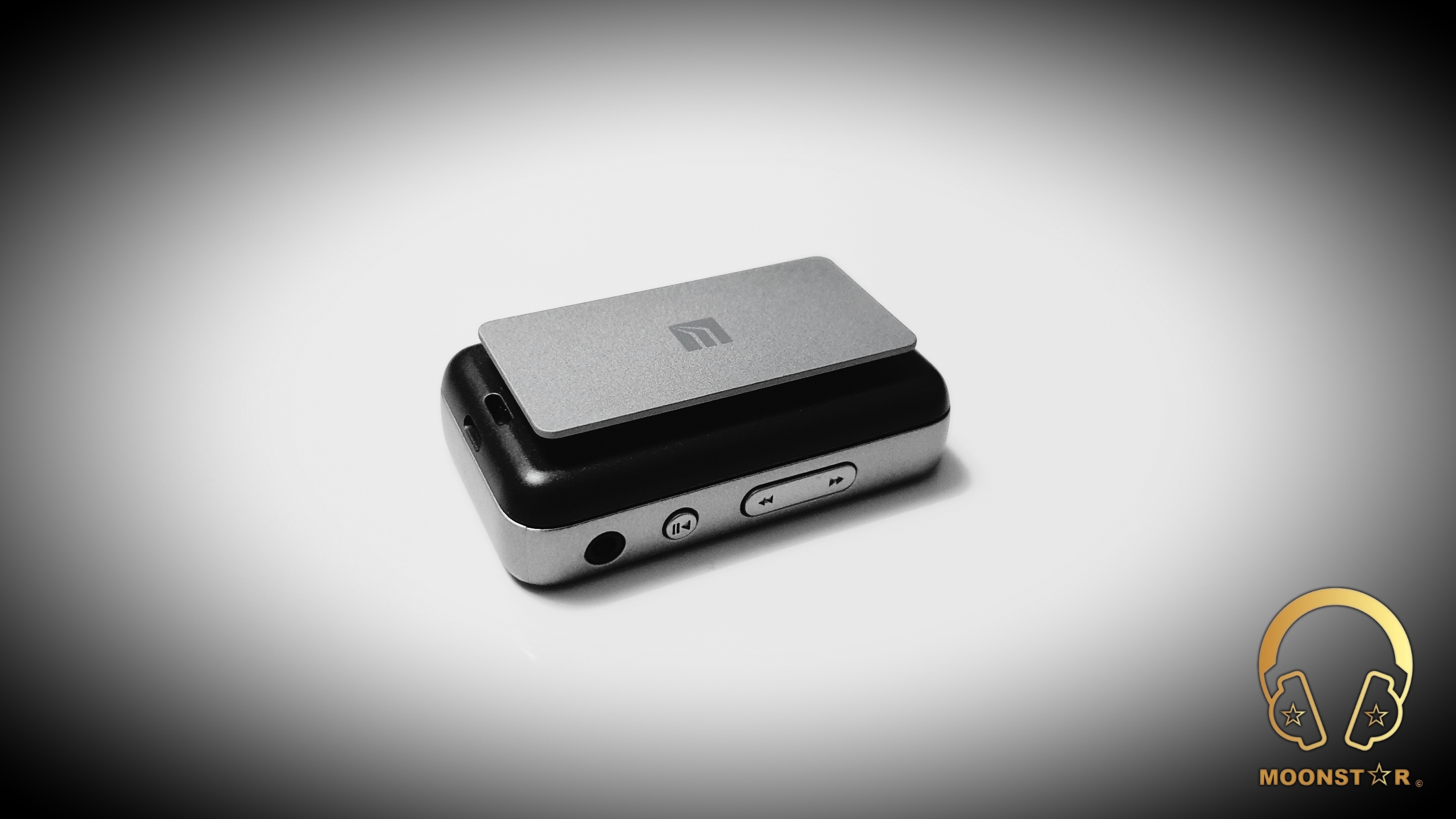
Radsone Earstudio ES100 Review
Introduction:
Radsone (short for Radical Sound) is a Korean company that is quite popular in the community with their HS100 Bluetooth Receiver that I will now reviews for you.
Radsone Website: https://www.radsone.com/
The Radsone ES100 (ES = EarStudio) has some nice features like 2 x AK4375a DAC’s, 3.5mm Unbalanced + 2.5mm Balanced output, LDAC, aptX-HD, AAC, aptX codec support, Independent Android/iOS App for custom fine tunings and more.

Disclaimer:
I would like to thank Radsone for providing me the Earstudio ES100 as review sample. I am not affiliated with Radsone beyond this review and these words reflect my true and unaltered, opinions about the product.
Price:
The actual price for the Radsone ES100 is 89,00 USD and can be purchased under the following link.
Purchase Link: https://www.amazon.com/dp/B078H4YD2L/ref=cm_sw_r_cp_ep_dp_MntFAbNG9BMCN
Package and Accessories:
The Radsone ES100 comes in a very small and simple cardboard box which shows some product brandings and information’s.

This box is containing the following items;
- 1 x Radsone ES100 (EarStudio) Bluetooth Receiver & DAC/AMP
- 1 x USB to Micro USB cable (short profile)

Design, Buttons and Build Quality:
The Radsone ES100 is a very lightweight and small device which has features an all plastic housing with exception of the back clip which is made of metal.
On the front of the device is a dark grey plastic panel with a matte finish where you can find and LED indicator in a form of a ring that lights up in different color variations (green, blue & red) depending on the device status.
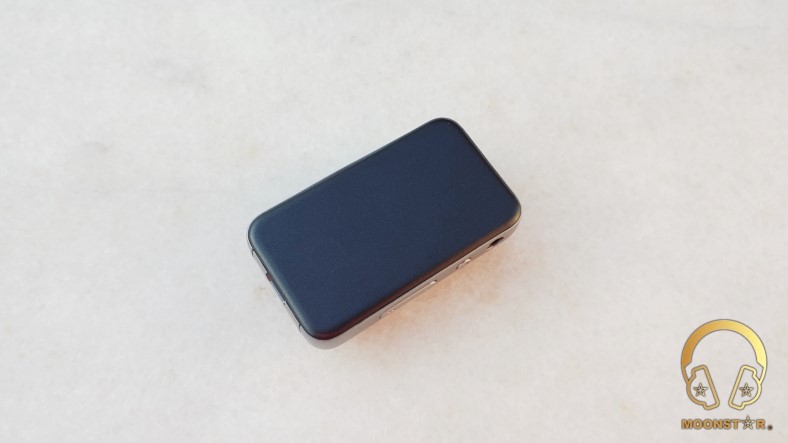
The frame of the ES100 is made of plastic in silver/light grey color. On the right side of this frame are the 2.5mm Balanced (TRRS) output the power button and next/previous track buttons.
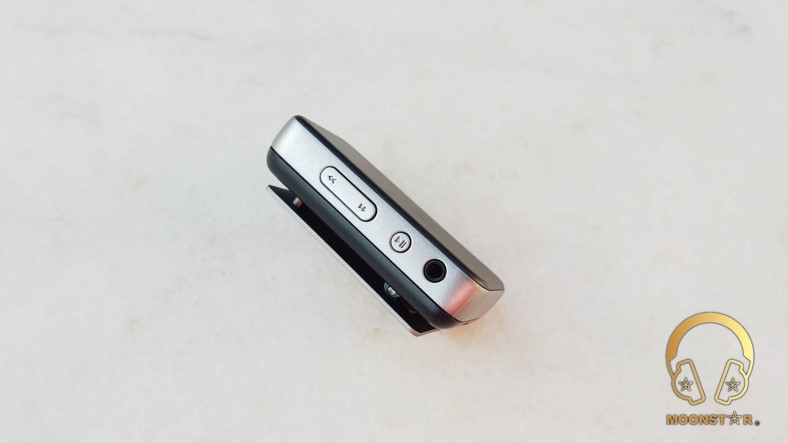
On the top is the lanyard holder while the Micro USB data & charging port is at the bottom of the device. To be honest, I would wish that Radsone have had used the new USB Type-C connector instead of the outdated standard Micro USB port.

The left surface sports the 3.5mm Single Ended (SE) output, the volume up/down button and a small grill that where you can find the build-in microphone for voice conversations and ambient sound functions.
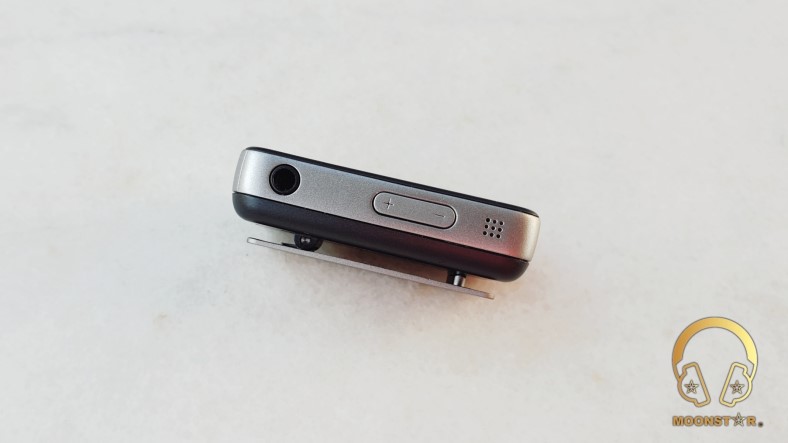
At the back side of the device is a metal shirt clip that sports the Radsone brand logo. I have read some negative comments about the clamping force of the shirt clip, but I think that Radsone solved this issue because the shirt clip of my ES100 is quite ok.

The overall build quality is ok, while I would wish that Radsone have had used some more premium materials like metal or glass like we have seen on the Colorfly BT-C1 or FiiO BTR3.
Specifications:
- DAC : 2 x AK4375A
- Bluetooth Chip : Qualcomm CSR 8675
- THD+N : 3.5mm Unbalanced: 0.0022% / 2.5mm Balanced: 0.0014%
- Output Power : 3.5mm Unbalanced: 1.1Vp @ 16Ohm / 2.5mm Balanced: 2.2 Vp @ 16Ohm
- Impedance : 0.5~1 ohm
- SNR : 3.5mm Unbalanced: 109dB (+2.8dBu) / 2.5mm Balanced: 110dB (+8.8dBu)
- BT Range : 10 meter
*SNR and THD+N measured in USB DAC mode
1. Hardware and Functionality:
The Radsone EarStudio ES100 sports a Qualcomm CR8675 Bluetooth Chip and an Asahi Kasei AK4356A DAC with build in amplifier.
a) Bluetooth Chip:
The Qualcomm CR8675 Bluetooth chip used in the Radsone EarStudio ES100 is a premium low-power solution designed for enhanced audio applications with support for 24-bit transmission and processing, thanks to its 120MHz DSP. This chip is also much more stable in signal strength than other competing chips, especially in situations with lots of interference.
Supported Codec’s are LDAC, aptX-HD, AAC, aptX and SBC.
b) DAC and AMP Section:
The inside the Radsone ES100 is the AK4375A DAC Chip of the japanese company Asahi KASEI which is a stereo advanced 32-bit audio DAC with a built-in ground-referenced headphone amplifier. An internal circuit is newly developed 32-bit digital filters for better sound quality, achieving low distortion characteristics and wide dynamic range. The AK4375A also has a jitter cleaner with a built-in SRC and a X’tal. The AK4375A is available in a 36-pin CSP package, utilizing less board space than competitive offerings.
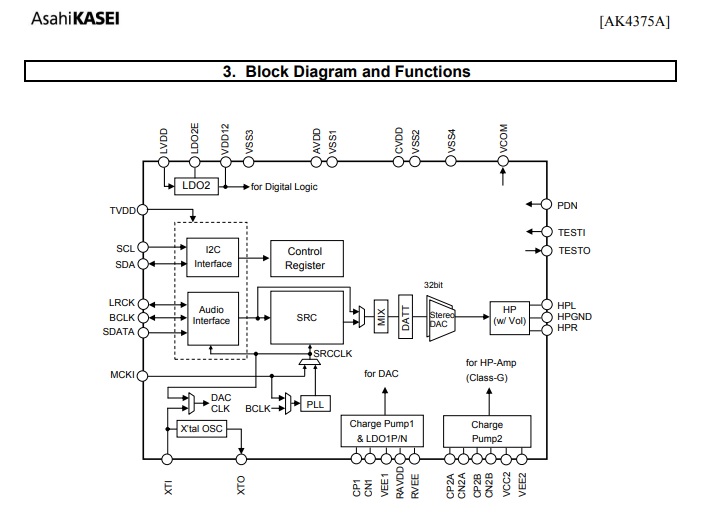
The AK4375A of the ES100 features 4 different digital filters which are below;
- Sharp Roll-off : Pre and post echoes make powerful sound.
- Slow Roll-off : Minimal echo reproduces original sound.
- Sharp Delay Sharp Roll-off : Post echo enhances bass sound.
- Slow Delay Sharp Roll-off : Minimal echo reproduces original sound.
The AK4375A has is a SoC with a build in Amplifer with an output power of 25mW @ 32Ω and 40mW @ 16Ω while the THD+N is 0.1%.
The Radsone ES is loud enough for most IEM’s with an impedance of 32 Ohm. If you have a headphone with higher voltage demands, you can activate the High Voltage Mode for both the 3.5mm Unbalanced and 2.5mm Balanced outs over the EarStudio Application that will increase (2x than normal mode) the voltage of the ES100.
The ES100 is able to drive my Audio-Technica ATH M50 to very loud volume levels.
DualDrive Technology:
The DualDrive Technology architecture provides the best and the optimized way of designing Dual DAC/AMP system for both single-ended (unbalanced) and full-differential (balanced) outputs in a single device. No switching parts are required with DualDrive architecture, enabling smaller PCB footprint, BOM cost reduction, and the better audio performances.
When the system detects 3.5mm standard connector unplugged, it changes to the full-differential operating mode by inverting the lower output signals from positive to negative. Eventually, the L+ and L-, R+ and R- are delivered to the output connector directly; the same way of any balanced audio system, but NO switches.
Analog Volume Control:
The Radsone ES100 has a built-in PGA (Programmable Gain Amplifier), which adjusts the output level in analog domain after D/A conversion. To get into more details, there are two methods of analog volume control which are PGA and potentiometer. PGA is small-sized and digitally controllable which allows controllable by software, while potentiometer is mechanically operated and it has the downside of noise occurrence and bigger size.
Preamplifier:
ES100 works as a preamplifier when connected to the other amplifier input. You need to connect the 3.5mm output to Unbalanced input or the 2.5mm Balanced output to Balanced input.
*DO NOT connect the 3.5mm output to Balanced or the 2.5mm to Unbalanced, back and forth.
c) Hissing:
The output impedance of the 3.5mm SE (Single Ended) output is 1 ohm, while the 2.5mm balanced output impedance is 0.5 ohm.
The sound came very clean and has had nearly zero hissing over both the 3.5mm SE out and the 2.5mm Balanced (TRRS) out. The background of the ES100 is pretty clean, which is a nice ability for a device in this price category.

d) USB DAC function:
The Micro USB port of the ES100 allows you to us it as a USB DAC without the need to install a driver, just simply plug and play!
e) Battery Life:
The battery of the ES100 should last according to Radsone specs for nearly 14 hours with a single charge by using the SBA or AAC codec and approx 8 hours with the LDAC codec.
My experience with the ES1000 shows that the battery is capable to delivery a non stop listening period of approx 12.5 -12 hours with AAC/SBC and nearly 7 hours with the LDAC codec, which is pretty good for such a small device.
2. Software (EarStudio Application):
The Radsone software team has developed the so called EarStudio Application for the use with Android and iOS devices. This application is a very useful tool to fine tune your ES100 over your phone or tablet. You need to install the latest Firmware (FW) which is the FW Version 2.0.2 to get access to all Software Features.
The EarStudio App has four (4) main setting menus, which are Home, Equalizer, Sound Control and the Ambient Sound menu.
The Home Menu gives you information’s about the input and output ports like Bluetooth, 3.5mm and 2.5mm balanced out. You can also set the Analog and Source volume, while the Analog volume has a submenu where you can change settings such like Channel Trim Volume, Max Volume Limit. Here you can switch also between Headphone Amp and Preamp functions.
If you touch the Radsone Logo at the Main Screen, a second menu will appear where you can find shortcuts like Device Search, Remote Device, Bluetooth Pairing, Power Off, FW Revision History, etc. Here is also a submenu called “Misc Control” where you can adjust settings like Mic Volume, Tone Volume, LED Option, etc.
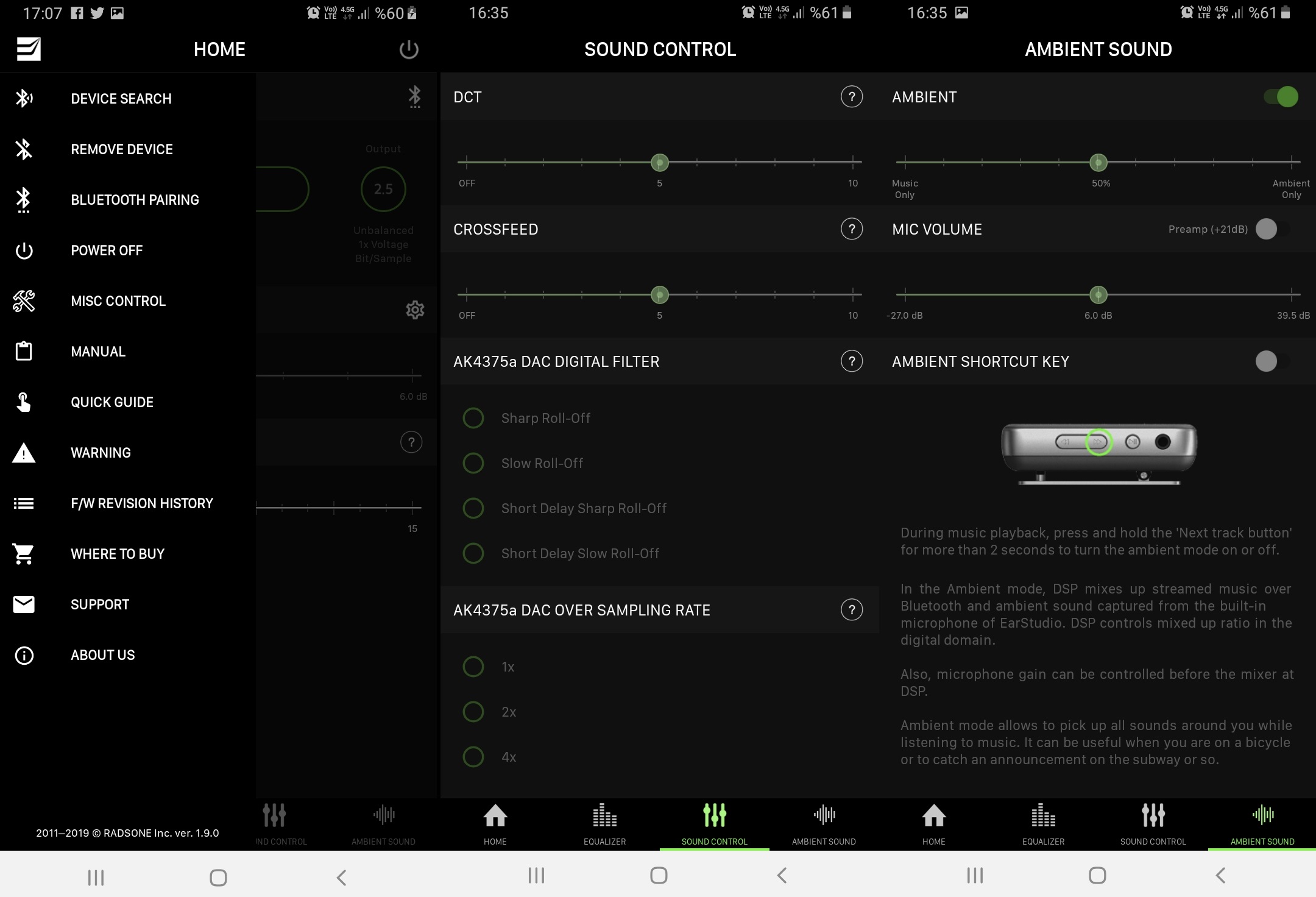
The Equalizer Menu gives you access to 22 Pre-adjusted EQ templates. You have also the option to adjust up to 4 of your own EQ parameters. Here is also a submenu where you can find the so called EQ Control settings.
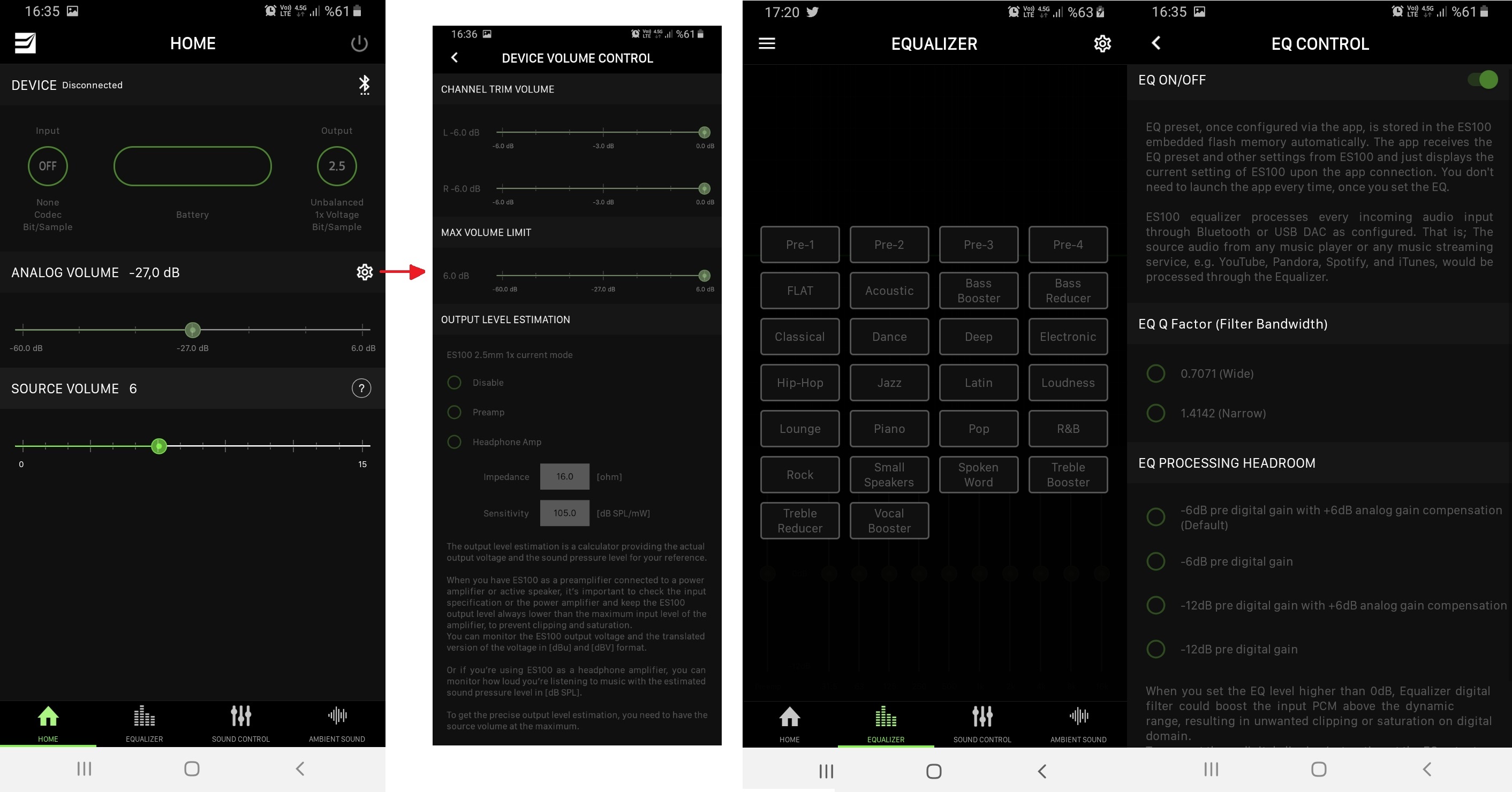
The Ambient Sound Menu helps to adjust the Ambient Mode feature of the ES100. The Ambient Mode allows you to pick up all sounds around you while listening to music. This is a useful feature when you are on a bicycle or to catch up an announcement on the subway, etc.
The Sound Control Menu gives you access to the settings like Crossfeed, DAC Oversampling Rate and DCT (Distinctive Clear Technology).
The “Distinctive Clear Technology” enhances sound quality by catching the detail – delivering more precise and natural sound. Every digital sound source has inherent subtle digital noise caused by quantization errors that generate unnatural signal patterns resulting in blurred sound details. Radsone’s proprietary technology DCT solves fundamental digital audio problems by eliminating the subtle digital noise inherent in all digital sounds.
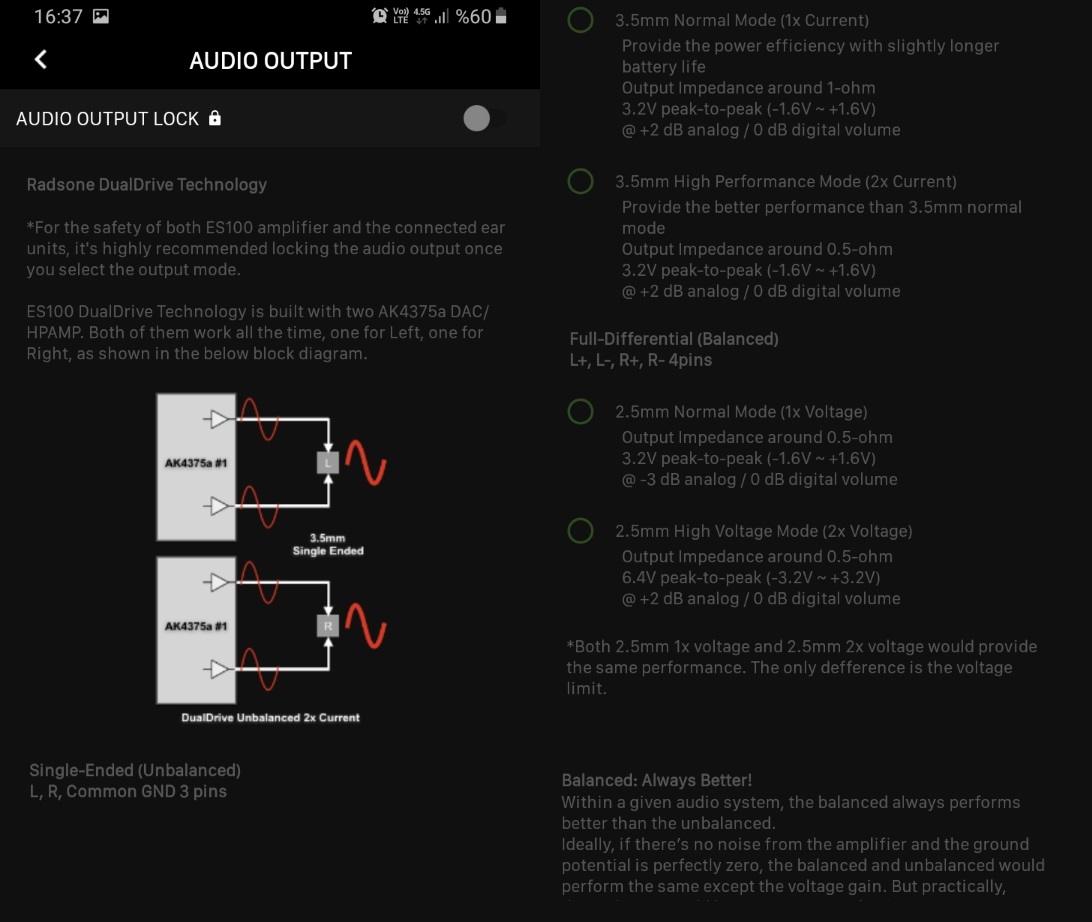
Equipments used for this review:
- Devices : Radsone EarStudio ES100, FiiO BTR3, FiiO BTR5, Samsung Galaxy S9+
- IEM’s : Radsone HE100, Final Audio B3,
- Earbuds : Penon BS1 Offical, OURAT ACG, Rose Masya Pro
- Headphones : Audio-Technica ATH50M, SoundMAGIC P22C
Albums & tracks used for this review:
- Gogo Penguin – Raven (Flac 24bit/192kHz)
- Otto Liebert& Luna Negra – The River (DSF) – Binaural Recording
- Vivaldi – Le QuarttroStagioni “The Four Season” (Wav 24bit/88kHz)
- Michael Jackson – Billie Jean (Flac 24bit/96kHz)
- Elton John – Your Song (Flac 24bit/192kHz)
- David Bowie – Black Star (Flac 24bit/96kHz)
- Dave Gahan – Kingdom (Flac 16bit/44.1kHz)
- Eric Clapton – Unplugged Album (Flac 24bit/96kHz)
- B.B. King – Riding With The King (Flac 24bit/96kHz)
- First Aid Kit – My Silver Lining (Flac 16bit/44.1kHz)
- London Grammar – Interlude (Live) (Flac 24bit/88kHz)
- Aretha Franklin – I Say a Little Prayer (Wav 16bit/44.1kHz)
- Diana Krall – So Wonderful (DSF)
- Laura Pergolizzi – Lost On You “Live at Harvard and Stone” (Wav 16bit/44.1kHz)
- No Doubt – Hella Gut (Spotify)
- Rush’s – Leave That Thing Alone (Flac 16bit/44.1kHz)
- Liquid Tension Experiment 2 – Acid Rain (Flac 16bit/44.1kHz)
- Twerl – Lishu (Spotify)
- U2 – Sunday Bloody Sunday (Flac 16bit/44.1kHz)
- Opeth – Windowpane (Wav 16bit/44kHz)
- Metallica – Sad but True (Flac 24bit/96kHz)
- Megadeth – Sweating Bullets (Flac 24bit/96kHz)
- Slayer – Angel of Death (Flac 24bit/96kHz)
- Armin Van Buuren – Vini Vici (Spotify)
- Lorde – Royal (Flac 24bit/48kHz)
- Photek – The Hidden Camera (Spotify)
- Tom Player – Resonace Theory (16bit/44.1kHz)
- Massive Attack – Angel (Flac 24bit/192kHz)
- Portishead – The Hidden Camera (MP3 320kbps)
The Sound:
The Radsone EarStudio ES100 has fairly neutral tonality with a touch of warmness. The bass is fast, the midrange is fairly transparent and clean, while the treble shows a pretty good level of extension, especially with the 2.5mm balanced out.
The Bass / Midrange / Treble / Soundstage Performance:
The Radsone ES100 offers a fairly linear bass presentation, without to show any extra bass emphasis which could ruin the well balanced tuning.
The subbass region of the ES100 has an average level of depth and extension, while the midbass region is pretty neutral, fast, detailed and slightly more pronounced especially over the 2.5mm balanced out. I didn’t hear any remarkable negative situations such like mixings or a so called midbass hump.
The bass is in general fast with instruments such like bass guitars and drums, while electro guitars are slightly bright and the contrabass is fairly vibrant and clear.
When it comes to the midrange, I can say that the Radsone ES100 offers a close to neutral, slightly warm and pretty transparent midrange presentation.
The upper midrange of the ES100 is more pronounced than the lower midrange, which makes females more detailed sounding than those of male vocals. Female vocals sounding slightly more realistic & natural compared to male voices, especially over the 3.5 mm unbalanced out. The 2.5mm balanced out offers slightly more body for male vocals.

The upper midrange of the Radsone ES100 is pretty pronounced and airy. The level of detail, transparency and extension really shines which should be the main reason while this device is so popular under the audiophile community.
From the violins to the female vocals, from the side flutes to the pianos, the upper midrange extension and airiness are at good levels.
The treble range of the Radsone ES100 is bright and shows a sufficient level of extension, without to have negative conditions such like over-sharpness.
Instruments such like cymbals have an average extension and there are no negative situations like mixing or lose of control.
The Radsone ES100 has a suitable soundstage for a fairly precise instrument placement and separation. The soundstage shows a moderate level of width and the depth, while stage is pretty airy and spacious in its presentation.
Comparisons:
Radsone EarStudio ES100 versus FiiO BTR3:
Both the Radsone ES100 and the FiiO BTR3 are small and lightweight devices that are showing some nice hardware specs. The BTR3 has more premium and solid appearance due to the use of glass and plastic material. The ES100 looks a bit cheaper while the build quality is ok. The ES100 and BTR3 are equipped with the same Qualcomm CR8675 Bluetooth chip, while the there are some differences in the DAC selection. The Radsone ES100 comes with a two AK4375a DAC’s, while the FiiO BTR3 has a single Ak4376a DAC chip. The ES100 has both the 3.5mm unbalanced and 2.5mm balanced outputs, while the BTR3 has only the 3.5mm unbalanced output.
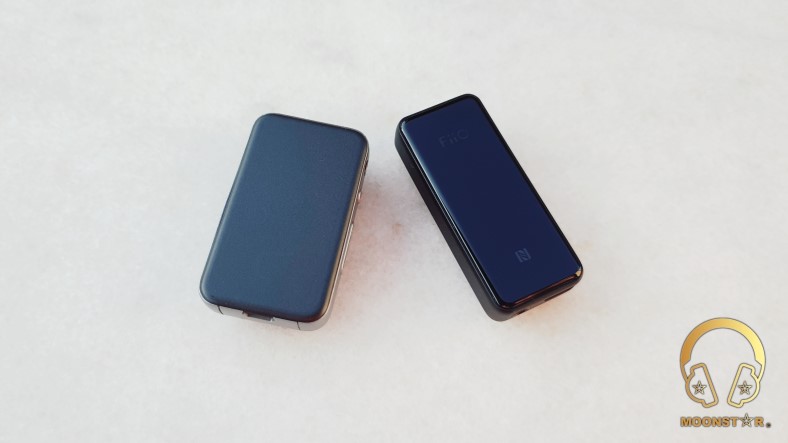
When it comes to the sound performance I can say that the BTR3 has a slightly warmer tonality and bit more weight/body in the lows and midrange region.
The FiiO BTR3 has the upper hand in terms of subbass depth and extension, while the Radsone ES100 is superior in terms of midbass tightness and speed.
The midrange of the BTR3 has slightly more body and a warmer tonality, while the ES100 sounds a bit more transparent. The FiiO BTR3 is slightly more successful with male vocals, while the ES100 sounds more transparent and pronounced in the upper midrange region, which makes it suitable for female vocals.
The treble range of the ES100 shows better extension and sounds also slightly more controlled than those of the FiiO BTR3 which performs otherwise pretty well in this region.
Both the Radsone ES100 and the FiiO BTR3 are more successful in terms of soundstage width, while the ES100 has the upper hand in terms of depth, especially over the 2.5mm balanced output.
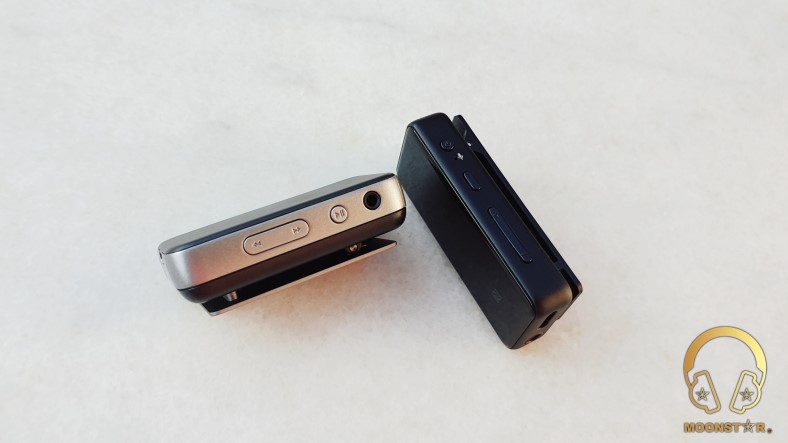
Radsone EarStudio ES100 versus FiiO BTR5:
The Earstudio ES100 has in general a softer and smoother overall presentation compared to the FiiO BTR5. Both devices have a very clear output with very low to none hissing. The background is clear and the separation is pretty good on both Bluetooth DAC/AMP’s. The midbass and subbass character of the BTR5 and the ES100 is fairly similar and do show only small differences.
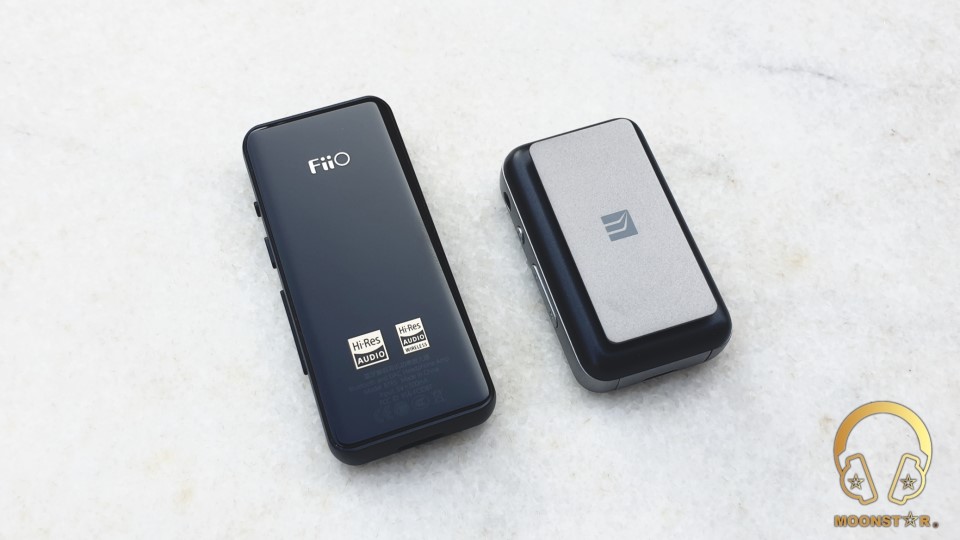
The midrange of the BTR5 sounds slightly morr transparent compared to the ES100, while the ES100 has a smother, softer and more musical presentation.
The upper midrange and treble region of the BTR5 is more pronounced and has a higher level of intensity. The Earstudio ES100 has the upper hand in terms upper midrange musicality and treble control.

The soundstage of both Bluetooth devices has a sufficient performance for a good instrument and vocal separation with good amount of airiness and space. The EarStudio ES100 has the upper hand in terms of soundstage depth, while the FiiO BTR5 is slightly better in terms of wideness.
Conclusion:
The Radsone ES100 is a very good all-rounder for those who are looking for a small device, with lots of hardware + software features that offers a great sound performance for the price.
Pros and Cons:
- + Neutral and Detailed Sound
- + Power
- + 3.5mm SE & 2.5mm TRRS outputs
- + Great Battery life
- + Lots of Software & Hardware Features
- – To much plastic
- – Buttons (Especially the Power Button) are a bit too small
- – Weak Accessory Package (No Protective Case, Lanyard, etc.)
- – Micro USB instead of USB Type C

